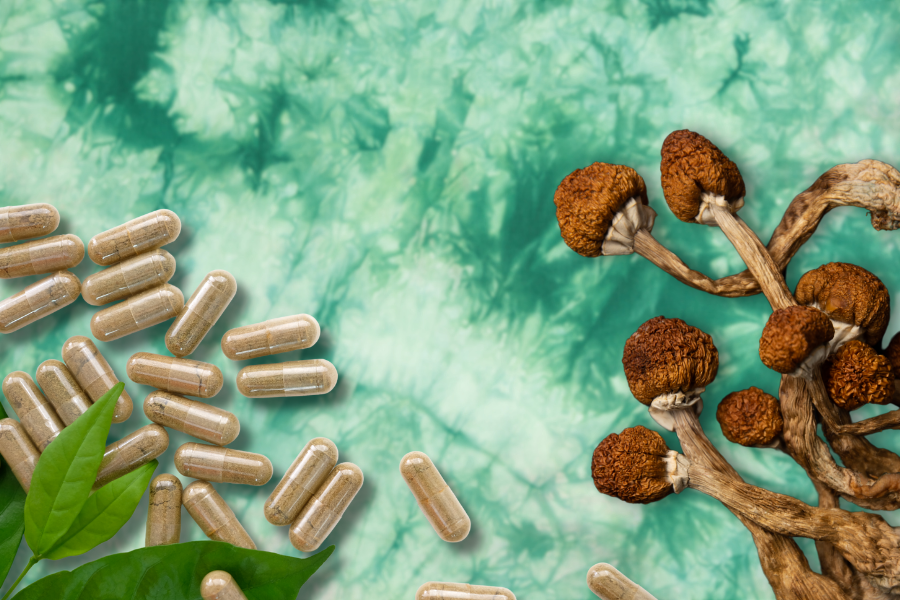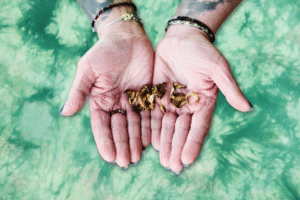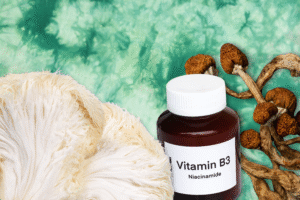Microdosing Protocols and How to Create Your Own

Microdosing is about precision, observation, and subtle shifts in perception. When done thoughtfully, it can reshape your daily rhythms, enhance clarity, and reveal nuances in mood, productivity, and cognition that often go unnoticed. But these effects don’t happen by accident. The structure of your dosing, timing, frequency, and rest periods, shapes the experience as much as the substance itself.
Protocols exist to guide this process, providing frameworks that balance effectiveness with safety. Some are highly structured, like Fadiman’s classic approach, while others, like the Stamets Stack, incorporate cognitive-supportive supplements to expand potential benefits. There are also more flexible methods, from microdosing twice a week to following intuitive signals from your own body.
Understanding these frameworks is the first step, but true mastery comes from personal experimentation.
What are Microdosing Protocols?
Before exploring specific protocols, it’s important to understand the basics. A microdosing protocol is a structured set of guidelines for taking a low dose of magic mushrooms. These protocols detail the timing, frequency, and duration of dosing, aiming to maximize potential benefits while minimizing risks.
There are several microdosing protocols, each with its own schedule and intended effects. Most include a rest period of two to four weeks after completing a cycle, which typically lasts between four and eight weeks depending on the protocol.
Psychedelics like magic mushrooms can build tolerance quickly, so these breaks are essential for maintaining effectiveness. To determine if a protocol works for you, it’s recommended to follow it consistently for at least four weeks.
Discover Best Mushroom Strains for Microdosing.
1. Fadiman Protocol
Also called the Beginner’s Protocol, the Fadiman Protocol is the most widely recognized microdosing schedule. Named after Dr. James Fadiman, it was designed to help users observe the effects of microdosing by clearly separating microdosing days from non-microdosing days.
This protocol is an ideal starting point for a first microdosing experience. It follows a three-day cycle over a period of four to eight weeks.
How to Microdose Using the Fadiman Protocol:
- Day 1: Microdose
- Day 2: Transition day (no dose)
- Day 3: Normal day
- Day 4: Begin the next microdosing day
Cycle: Repeat this schedule for four to eight weeks
Reset: Take a 2–4 week break after completing the cycle to prevent tolerance buildup and maintain effectiveness.
2. Stamets’ Stack (Stamets Protocol)
Paul Stamets, a world-renowned mycologist, author, and medicinal mushroom advocate, developed a microdosing formula known as the Stamets Stack. This protocol combines psilocybin, niacin (vitamin B3), and the medicinal mushroom Lion’s Mane to support brain health and cognitive function.
The term “stacking” refers to the combination of these substances to achieve synergistic effects. The Stamets Stack is specifically designed to pair psilocybin with Lion’s Mane and niacin for optimal results.
How to Microdose Using the Stamets Protocol:
- Days 1–4: Stacking days (psilocybin + Lion’s Mane + niacin)
- Days 5–7: Transition days (no psilocybin)
- Days 8–11: Stacking days
- Days 12–14: Transition days
Cycle: Repeat this schedule for four weeks
Reset: Take a 2–4 week break after completing the cycle to prevent tolerance buildup and maximize benefits
3. Two-Days-A-Week Protocol
The Two-Days-A-Week Protocol is a simple microdosing schedule that involves taking psilocybin twice a week. While rest periods between doses aren’t strictly defined, it’s recommended to leave at least one day in between. This approach is ideal for beginners who want to start slowly and observe how microdosing impacts their daily life. It also works well for those wanting to align dosing with work, social commitments, or other weekly routines.
To follow this protocol, select two consistent days each week that fit your schedule, ensuring at least one day separates the microdoses. On each microdosing day, take a small fraction of a full dose. The following day serves as an observation day to notice any lingering effects. Like other protocols, rest periods are included to prevent tolerance buildup.
Two-Days-A-Week Microdosing Schedule:
- Day 1: Microdose (e.g., Tuesday)
- Days 2–4: Off
- Day 5: Microdose (e.g., Saturday)
Cycle Length: Four to eight weeks
Rest: Two to four weeks
4. Intuitive Microdosing
Intuitive microdosing is a flexible approach that relies on personal awareness rather than a strict schedule. The only guideline is to leave at least one day between microdosing sessions.
Many people transition to this method after completing one or two cycles of a structured protocol, using their experience to guide when and how often to take a microdose based on how their body and mind respond.
How to Make Your Own Microdosing Protocol?
Once you’ve explored structured protocols like Fadiman’s or the Two-Days-A-Week approach, you may find opportunities to tailor a schedule that aligns with your personal rhythm. Creating your own microdosing protocol allows you to experiment with timing, dosage, and frequency to match your unique needs, whether it’s enhancing focus, creativity, or emotional balance.
Beyond psilocybin alone, microdosing can be combined with other functional mushrooms, such as Lion’s Mane or Reishi, to support cognitive function, mood, and overall wellness. Some practitioners also incorporate vitamins like niacin or adaptogens to amplify potential benefits.
The key is careful observation: track your mental state, energy levels, and productivity, and adjust accordingly. Experiment. Every person’s response is different, and your ideal protocol may look very different from someone else’s. By approaching it methodically and responsibly, you can develop a microdosing routine that fits seamlessly into your life and supports your personal growth.
Final Word
Each microdosing protocol comes with its own set of guidelines, schedules, potential benefits, and considerations. Choosing the right one depends on your goals, daily routine, and prior experience. Some protocols may be better suited for supporting mental health, while others prioritize flexibility to fit around work or social commitments.
For beginners, keeping a journal or tracking your experiences is highly recommended. Observing subtle changes in mood, focus, and energy is essential to understanding how microdosing affects you and to making adjustments that maximize its benefits.

